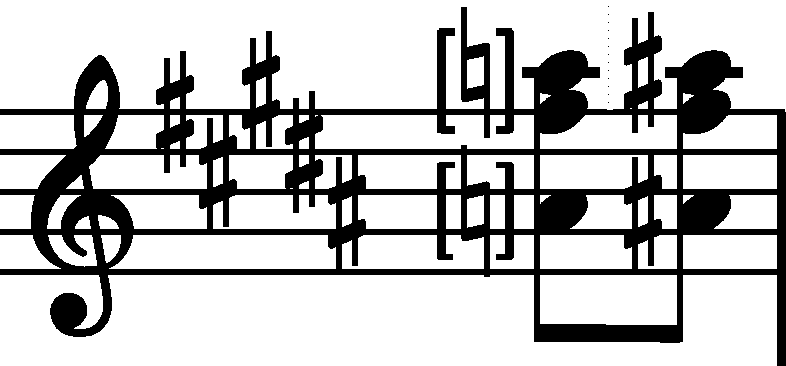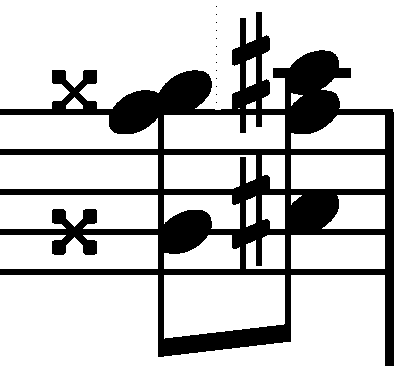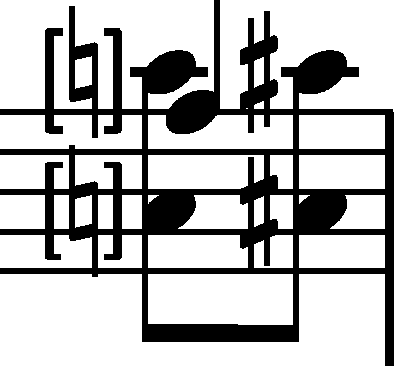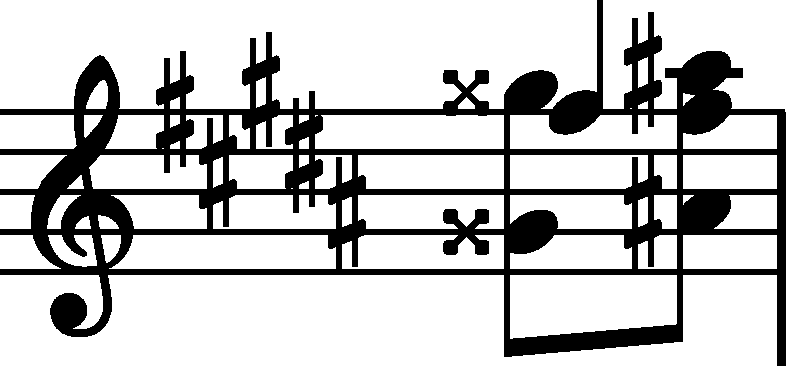



Chopin corrected the third beat of the bar in A at least four times. He crossed out the first three versions –  ,
,  ,
,  * – while in the fourth one –
* – while in the fourth one –  – he resorted to erasing the f
– he resorted to erasing the f 2 crotchet, since he probably did not want to obfuscate the text with another crossing-out and since he ran out of space to write yet another version. However, the ink was not entirely removed, hence both the notation and Chopin's intention are not entirely clear – according to Fontana, the note was not being removed, whereas according to the engraver of FE – it was.
2 crotchet, since he probably did not want to obfuscate the text with another crossing-out and since he ran out of space to write yet another version. However, the ink was not entirely removed, hence both the notation and Chopin's intention are not entirely clear – according to Fontana, the note was not being removed, whereas according to the engraver of FE – it was.
In the main text we assume that Chopin first decided not to play f 2 on the last quaver and then removed it completely. It would be a typical example of Chopinesque sonic economy – traces of removal of euphonic, yet superfluous sounds can be found even in this very Prelude, e.g. in b. 39.
2 on the last quaver and then removed it completely. It would be a typical example of Chopinesque sonic economy – traces of removal of euphonic, yet superfluous sounds can be found even in this very Prelude, e.g. in b. 39.
* The 3rd version was left unfinished, since Chopin quickly realized that he preferred the first quaver being written with the use of g , and not a.
, and not a.
Compare the passage in the sources »
category imprint: Graphic ambiguousness; Differences between sources; Corrections & alterations; Source & stylistic information
issues: Corrections in A, Deletions in A
notation: Pitch
